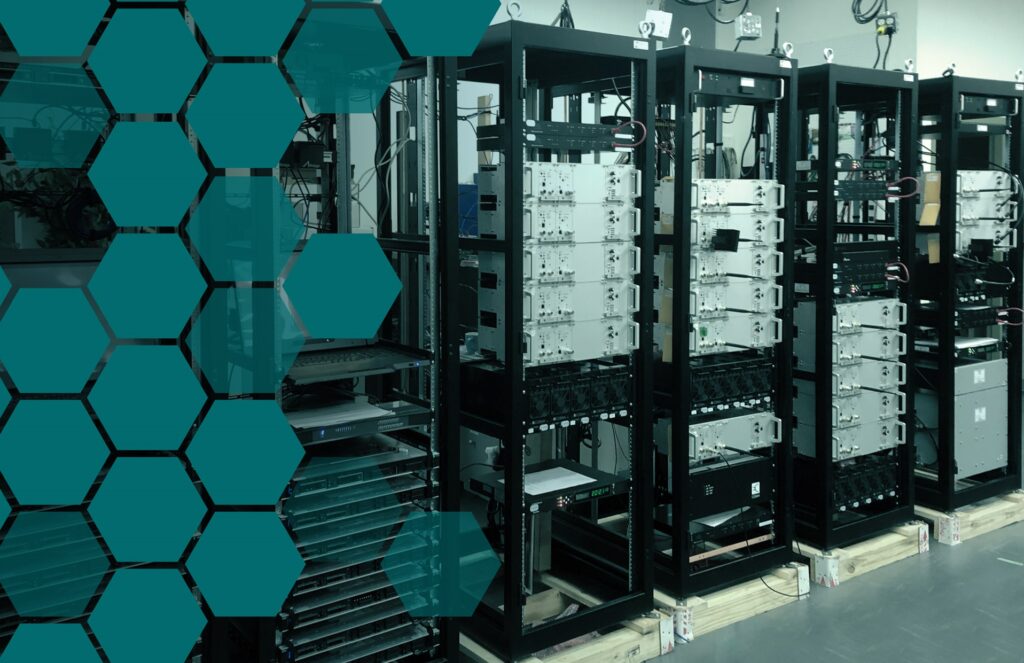Multi-Domain, Multi-Vendor Secure PTT Voice and Data Communications
Critical Communications Systems
From Technology to Systems
Did you know that Etherstack has deployed large APCO P25 systems across the United States, Canada and Australia – including the largest P25 system in the world by geographical span – using our own APCO P25 digital radio network solution?
Etherstack has designed and manufactured its own APCO P25 digital network equipment for over 20 years and these solutions are deployed in public safety agencies across North America and in the Asia Pacific region.
Fixed and Deployable Systems via P25, LTE and Satellite
Etherstack’s priority as a system integrator is to draw on the best available applications and solutions to deliver real-time, integrated, end-to-end encrypted voice and data where the user needs them. Etherstack offers fixed radio systems, deployable radio systems and integrated extension of secure radio services over LTE and satellite. See Tactical and Satellite Systems for more information on our deployable solutions.
Innovative P25 Network Types and Full Band Support
Etherstack can deploy P25 trunked, conventional and simulcast/voted networks in any frequency band from 30MHz-1GHz.
Our innovative Smart P25 Site technology means that we utilize minimal backhaul bandwidth which means that you can use your existing backhaul to carry our site switch traffic.
World Class Partners
Etherstack technology is used in third party mission critical systems around the world. From Samsung to L3Harris to CISCO to local suppliers – Etherstack has access to partner solutions and applications from leading suppliers globally that we draw on to provide custom multi-vendor systems for our users.

Open Standard Network Interfaces on EVERY Interface. No Vendor Lock-in
- TIA standards compliant ISSI (Inter RF Sub System Interface) supporting the widest range of P25 call types and supplementary services of any P25 network vendor
- TIA standards compliant CSSI (Console Sub System Interface) supporting the widest range of P25 call types and supplementary services of any P25 network vendor
- Location Services Centre (LSC) APIs for 3rd party location services and GPS/AVL applications and integration
- KMF & OTAR solutions including support for the new inter-KMF standard
- Telephony and PABX gateways
Commitment To Standards
We have attended almost every TIA Project 25 standards meeting for 20 years, committing over half a million dollars to standards development for the benefit of the end users and industry. We chair and vice chair committees, write the standards and drive industry technology and innovation forward. At Etherstack we are drivers, not passengers.
Site Repeater Choice (Etherstack’s XBR or your own preferred Repeaters)
Uniquely, Etherstack’s Smart P25 Site technology provides an advanced digital signal processing (DSP) solution that allows Etherstack to integrate your existing repeater equipment into a fully P25 standards compliant (including strict RF performance requirements) network solution using our Smart P25 Site technology and MetroNet25 High Availability core network solution.
Ask us about our high performance XBR Repeater product line or talk to us about integrating you preferred existing repeaters (or a blend of both) to deliver the latest digital P25 features to your network.
Fault Tolerant, High Availability, No Single Point of Failure
Every component in our system can be deployed in a high availability fully redundant manner, from the site repeaters and controllers, backhaul links and fully redundant core network architecture, including geographically isolated disaster recovery nodes.
This is how Etherstack have maintained the highest uptimes and availability statistics in the industry.

No “Big Bang” Upgrades
We can’t understand our competitors forcing their customers to take big bang, forklift upgrades. It creates opportunities for Etherstack to show these customers that there is another way.
Advanced Site Types
- APCO P25 digital trunking (Phase I, Phase II and Simulcast)
- Composite Control Channel (Single Channel P25 Trunking)
- Multimode Sites (Dual mode P25 digital and analog support for easy migration)
- Linkless P25 Repeater Sites (Rebroadcast from neighbouring sites)
- Ultra-low power sites (Environmentally friendly and cost effective)
Low Power Options and Solar Powered Sites
We understand big open spaces with little infrastructure. Talk to us about our ultra-low powered site and linking options, including solar powered sites.
24 x7 x 365 Support
Whether from our Annapolis, MD support center, or Sydney, Australia, through to Yokohama, Japan or Reading, UK – you will always find Etherstack standing by to support you and your network when disaster strikes.
Our customers keep coming back for more.
Case Studies
See case studies on Ergon Energy’s Queensland statewide system, Etherstack’s LTE 3GPP MCx to radio system 3GPP Interworking Function (IWF) and an example of standards-based integration of critical voice and data services across systems from different vendors in Etherstack’s Idaho Five County Public Safety Network.
Other long term Etherstack systems clients include the American Samoa Department of Homeland Security, Department of Home Affairs, Commonwealth of Australia, Idaho Police, Fire, Ambulance, NSW State Emergency Service, Royal Canadian Mounted Police, US Customs & Border Protection, US Department of Interior and the US Department of State.
